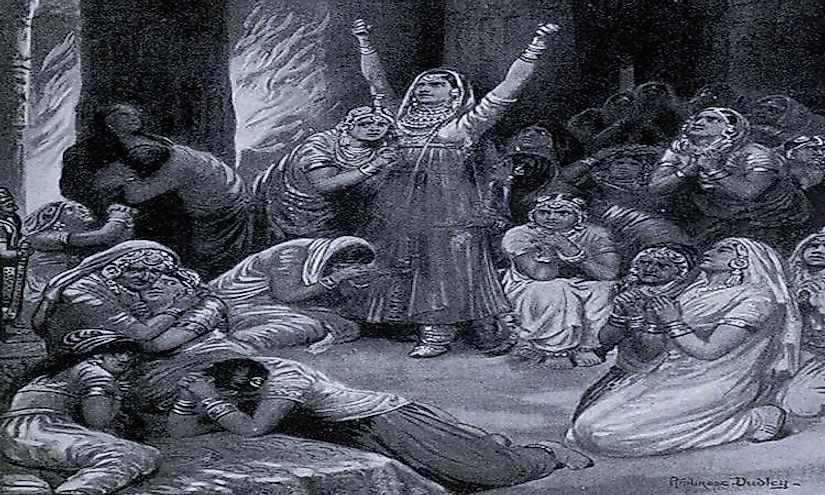What Was The Ancient Indian Practice Of Jauhar?

What Is Jauhar?
Queens and females of royalty practiced Jauhar in ancient India, particularly during the era of the Rajput kingdom. When under attack from external forces, these Rajput women would commit self-immolation, a suicidal sacrifice. This practice has been recorded since Muslim invasions during the middle ages and throughout northern regions, Deccan, and Gujarat. Women and children, those belonging to the Rajput clan, would kill themselves to avoid being raped, becoming slaves or being killed. The vast majority of these Jauhar practices were performed in large groups as an act of protest against the invasions and as a way to conserve their cultural pride and honor.
What Happens During A Jauhar?
Records indicate that Jauhar took place at night. Brahmin priests attended this practice, chanting Vedic texts. These texts are the oldest sacred scriptures of Hinduism. As the Brahmin priests chanted, women threw themselves and their children into a fire while wearing their wedding dresses.
The next morning, men performed the Saka ritual. They bathed, put on saffron, placed a tulsi leaf in their mouths, and marked their foreheads with the ashes of their wives and children. The men then rode off into battle with the enemy. The men did not allow themselves to be taken alive either.
By practicing Jauhar, the Rajput robbed their enemies of a glorious victory.
Most Famous Instance Of Jauhar
One of the most notable instances of Jauhar occurred in 1303 at the Chittorgarh Fort, as mentioned in the epic poem Padmavat. This fort is located in the northwestern region of the country and was one of the largest of its era. King Rawal Ratan Singh controlled this fort when Alauddin Khilji, the Sultan of Delhi, invaded. According to Padmavati the Sultan wanted Queen Rani Padmini for his harem. He sent a message to King Singh, offering to spare the fort for one look at the Queen. The King agreed, and the Sultan was permitted to see the Queen through mirror reflections. As the Sultan was leaving, his army invaded the gates and captured the King.
Hearing the news, the Queen agreed to join the Sultan’s harem on the condition that she could bring 700 women with her. These women were carried in palanquins, a type of wheelless carriage. The Queen hid warriors in these palanquins and invaded the Sultan’s camp in order to recapture her husband. This started a battle in which the King was killed. To avoid her fate, the Queen, women, and children committed Jauhar.
Criticism Of Jauhar
The practice of Jauhar is closely related to Sati, the Hindu practice in which a widow throws herself upon her husband’s funeral pyre to commit suicide. Because Sati is criticized and closely related to Jauhar, Jauhar has also been heavily criticized. These criticisms are particularly common from people of non-Asian cultures and religions other than Hinduism. It is seen as dehumanizing to women because the act of suicide plays such an important role in the wife demonstrating her devotion to her husband. Jauhar has also been related to the Japanese act of honor suicide, the act of killing oneself to avoid defeat (as well as shame from certain actions). In India, both Muslim and British invaders attempted to stop the practices of both Jauhar and Sati.











